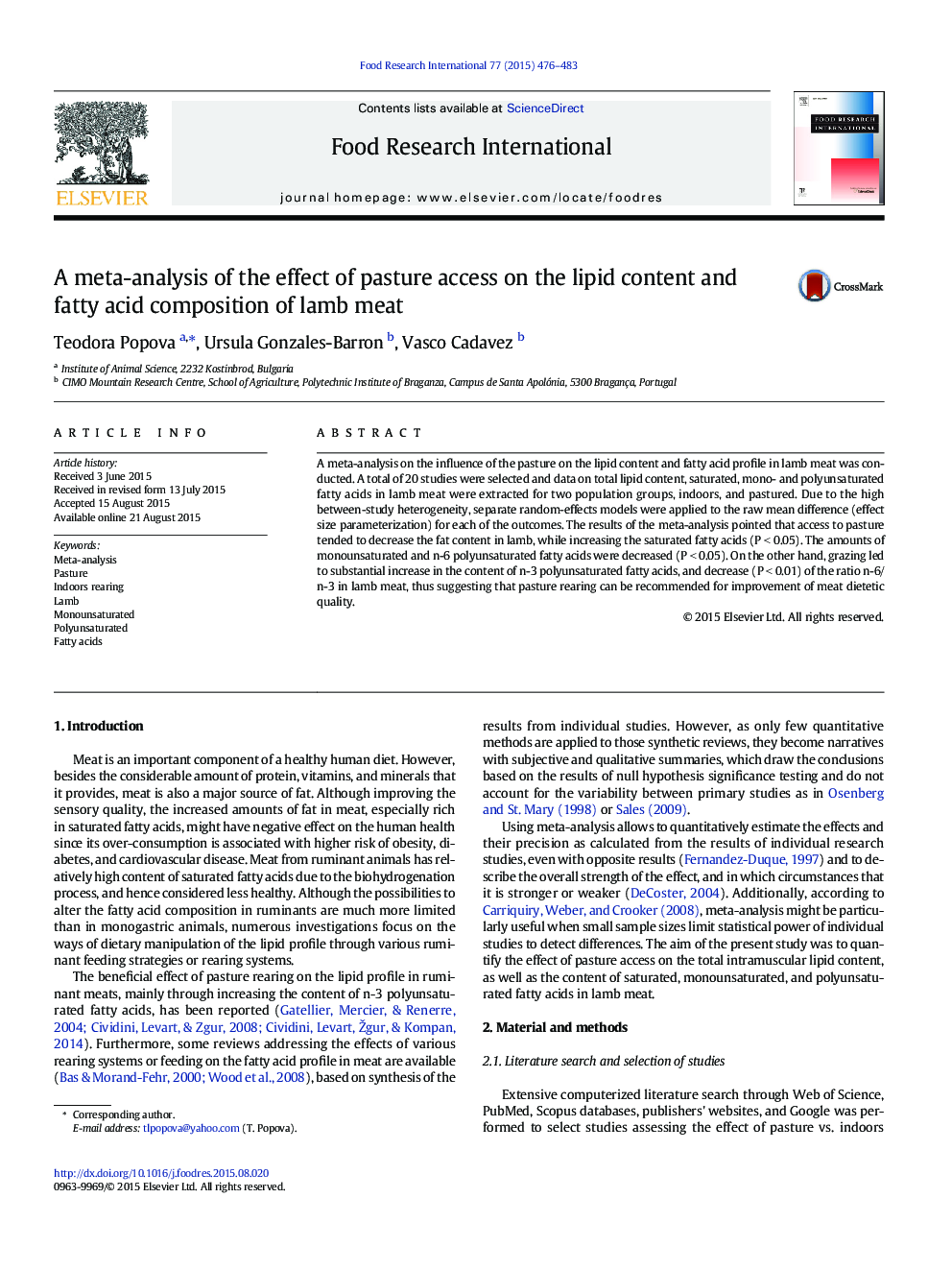| Article ID | Journal | Published Year | Pages | File Type |
|---|---|---|---|---|
| 4561367 | Food Research International | 2015 | 8 Pages |
•Effect of pasture on lipid and fatty acids in lamb is evaluated by meta-analysis.•Access to pasture tends to decrease the fat content in lamb but increased SFA.•The contents of MUFA and n-6 PUFA are decreased in pastured lambs.•Pasture increases the content of n-3 PUFA and decreases the ratio n-6/n-3 in lamb.•Results suggest that grazing can be recommended to improve meat dietetic quality.
A meta-analysis on the influence of the pasture on the lipid content and fatty acid profile in lamb meat was conducted. A total of 20 studies were selected and data on total lipid content, saturated, mono- and polyunsaturated fatty acids in lamb meat were extracted for two population groups, indoors, and pastured. Due to the high between-study heterogeneity, separate random-effects models were applied to the raw mean difference (effect size parameterization) for each of the outcomes. The results of the meta-analysis pointed that access to pasture tended to decrease the fat content in lamb, while increasing the saturated fatty acids (P < 0.05). The amounts of monounsaturated and n-6 polyunsaturated fatty acids were decreased (P < 0.05). On the other hand, grazing led to substantial increase in the content of n-3 polyunsaturated fatty acids, and decrease (P < 0.01) of the ratio n-6/n-3 in lamb meat, thus suggesting that pasture rearing can be recommended for improvement of meat dietetic quality.
